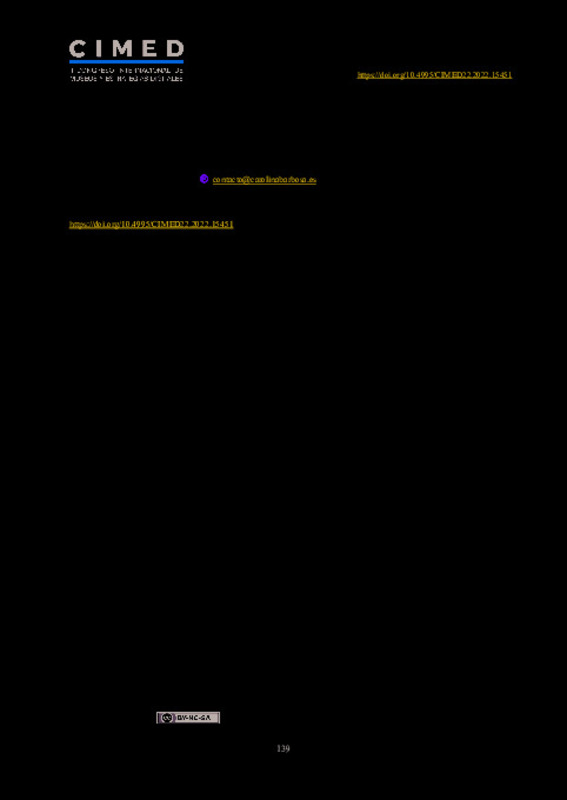|
Resumen:
|
[EN] Currently there are several ways through which museums share their collections, data and experiences
to the public. All of them enrich the communication and the interaction between the museum and the
users. To this ...[+]
[EN] Currently there are several ways through which museums share their collections, data and experiences
to the public. All of them enrich the communication and the interaction between the museum and the
users. To this offer of contents, e-learning can be added.
E-learning is a training modality whose main quality is flexibility, since it allows students to consult the
contents without depending on geographic location, schedules or a specific device. This reflects an
advantage when the institution or organization wants to share content related to its expositions.
E-learning is composed of multimedia, instructional design and a virtual classroom. To develop these
factors correctly, there are working methodologies (ADDIE model), software (Adobe suite, Captivate,
Articulate) and digital platforms (Moodle, YouTube, Wordpress), available.
The museums have different materials and topics that can be shared through this teaching process. The
narrative in applied museography can be translated into applied narrative in online learning content.
These contents must be developed following learning objectives, economic-publicity retribution and
positive answer on the part of the participants.
Among the contents that can be developed in e-learning, there are videos, SCORM (interactive content),
virtual tours, readings, MOOCs, quizzes, infographics, and others. These must be aligned with the
purposes, capabilities and needs of the museum.
The application of e-learning allows to have a repository of interactive materials and provides a new
channel to empathize with the public, and becomes a tool to analyze their consumption, since it will be
possible to obtain quantitative and qualitative data on which topics of the museum are clear and of
interest, and which ones need improvement in their development and presentation.
The approach will always depend on the feasibility and limitations of the museum. This paper will
provide the necessary guidelines to take the first steps towards the digitization and creation of teaching
contents in cultural institutions.
[-]
[ES] Actualmente existen diversas formas por medio de las cuales los museos comparten sus colecciones, datos y experiencias disponibles hacia el público. Todas ellas enriquecen la comunicación y la interacción museo – ...[+]
[ES] Actualmente existen diversas formas por medio de las cuales los museos comparten sus colecciones, datos y experiencias disponibles hacia el público. Todas ellas enriquecen la comunicación y la interacción museo – usuarios. A la oferta de contenidos, puede ser agregado el aprendizaje en línea.El e-learning es una modalidad formativa que tiene como principal cualidad la flexibilidad, ya que permite a los estudiantes el consultar los contenidos sin depender de la ubicación geográfica, horarios o un dispositivo en específico. Esto refleja una ventaja al momento en que la entidad u organización desea compartir temas referentes a sus exposiciones.El e-learning se compone de multimedia, diseño instruccional y un aula virtual. Para desarrollar correctamente estos factores, existen metodologías de trabajo (el modelo ADDIE), softwares (suite de Adobe, Captivate, Articulate) y plataformas digitales (Moodle, YouTube, Wordpress), al alcance.Los museos cuentan con diferentes recursos y temas que pueden ser compartidos a través de este proceso de enseñanza. La narrativa en la museografía aplicada puede ser traducida a la narrativa aplicada en contenidos de aprendizaje en línea. Estos contenidos deben ser desarrollados siguiendo objetivos de enseñanza, de retribución económica – publicitaria y de respuesta positiva por parte de los participantes.Entre los contenidos que se pueden desarrollar en el e-learning, se encuentran videos, SCORM (contenidos interactivos), recorridos virtuales, lecturas, MOOCs, cuestionarios, infografías, entre otros. Estos deben ser alineados con las finalidades, las capacidades y necesidades del museo.La aplicación del e-learning permite tener un repositorio de materiales interactivos y brinda un nuevo canal para empatizar con el público, y se convierte en una herramienta para analizar su consumo, ya que se podrán obtener datos cuantitativos y cualitativos sobre qué temas del museo son claros y de interés, y cuales necesitan una mejora en su desarrollo y presentación.La propuesta dependerá siempre de las viabilidades y limitantes del museo. La presente comunicación brindará las pautas necesarias para dar los primeros pasos de acercamiento hacia la digitalización y creación de contenidos de enseñanza en las instituciones culturales.
[-]
|









